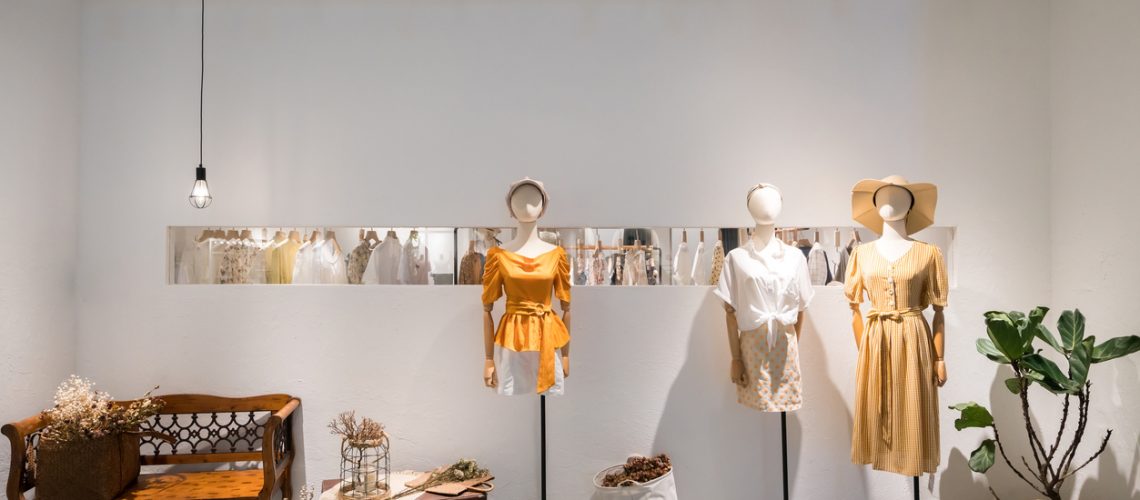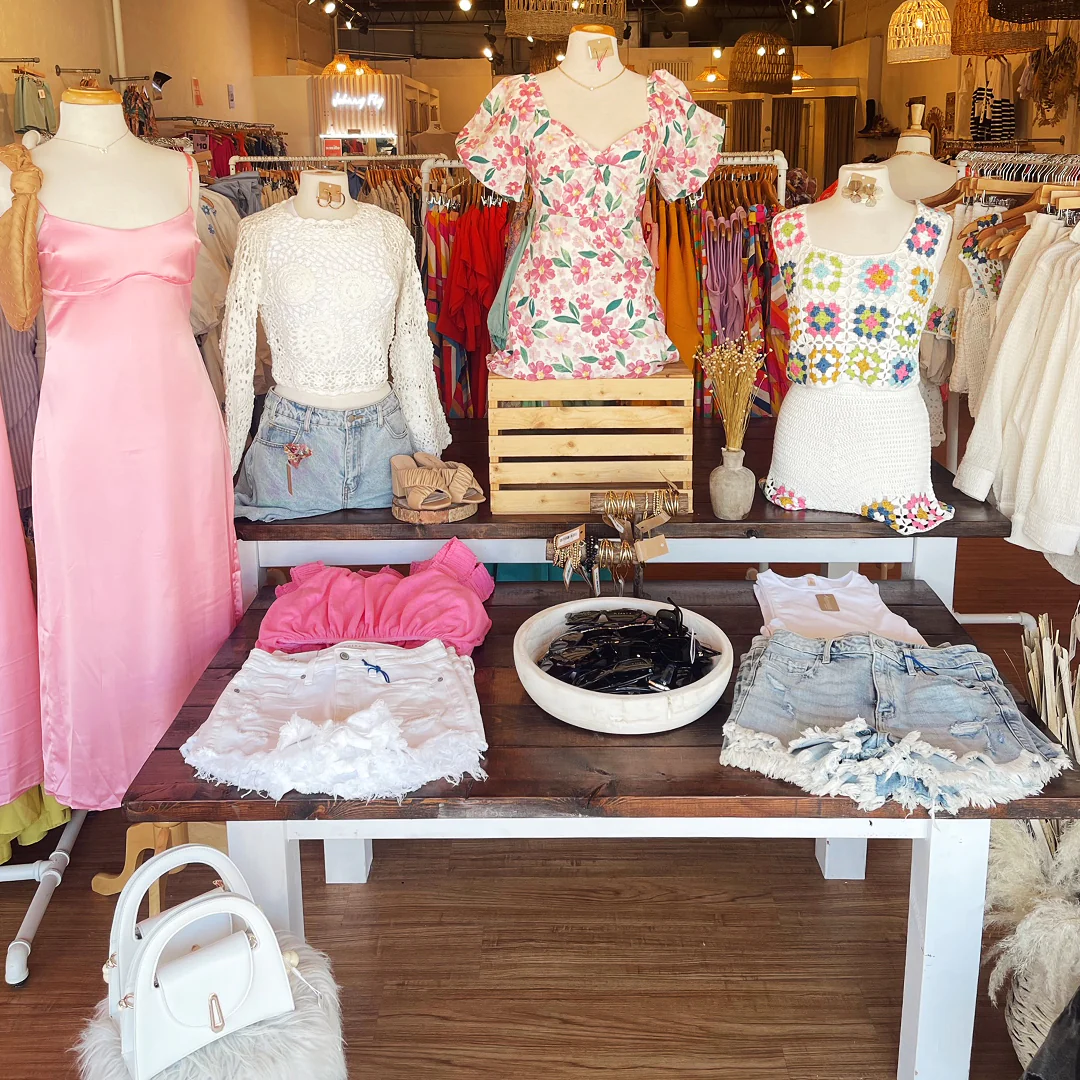Check Out the Latest Patterns in Boutique Fashion for each Season
Check Out the Latest Patterns in Boutique Fashion for each Season
Blog Article
Exploring the Advancement and Influence of Garments on Modern Fashion Trends
The evolution of garments has actually dramatically influenced modern fashion trends, merging historical criteria with advanced innovations. Legendary numbers like Coco Chanel and Yves Saint Laurent revolutionized the style sector by presenting ideas that prioritize comfort and ease of access, which proceed to reverberate today.
Historic Style Influencers
In the tapestry of fashion background, specific numbers have left an indelible mark, shaping the trends and designs that specify entire periods. Coco Chanel, an innovative developer, redefined women's style by introducing comfy, elegant clothes that left from restrictive corsets.
Elsa Schiaparelli is another essential figure, renowned for her progressive layouts that incorporated surrealist art, collaborating with Salvador Dalí to develop whimsical items that tested traditional appearances. Her innovative usage of shade and bold patterns resounds in contemporary fashion. Yves Saint Laurent, on the other hand, democratized high fashion with prêt-à-porter collections, bringing path styles to the masses and establishing a precedent for modern-day ready-to-wear lines.
These visionaries, amongst others, not just revolutionized style in their times however additionally set withstanding fads that reverberate in today's style sector, providing a foundation upon which modern designers proceed to construct and innovate. Their traditions highlight the significance of imagination and bold in style's ever-evolving story.
Technological Innovations in Style
Amidst the vibrant landscape of the fashion business, technical advancements stand at the leading edge of development, reshaping exactly how developers create and customers involve with fashion. The assimilation of 3D printing has revolutionized layout processes, making it possible for designers to experiment with intricate frameworks and lasting products that were formerly inconceivable. This innovation helps with rapid prototyping, reducing waste and accelerating production times.

Smart fabrics, embedding modern technology into fabrics, are additionally changing the industry. Technologies like temperature-regulating and self-cleaning textiles use improved performance and comfort. Wearable modern technology, integrating functions like fitness monitoring and communication, includes a new dimension to style, combining looks with usefulness.
Social Changes and Design
As technical innovations remain to improve the fashion business, cultural changes are just as influential, redefining design and customer choices. Recently, the rise of social networks systems has increased the circulation of global fashion patterns, enabling varied cultural influences to converge and coexist. This electronic interconnectivity has promoted the quick exchange of ideas, bring about a much more comprehensive and diverse interpretation of design that reflects the multifaceted nature of modern-day culture.
Cultural awareness and admiration have motivated designers to attract motivation from a wider range of ethnic and historical contexts, integrating conventional motifs with contemporary visual appeals. This blend has actually caused style that reverberates with a bigger audience, advertising a sense of identification and belonging across different demographics. In addition, the enhancing demand for personalization has actually driven brands to supply customizable choices, enabling customers to reveal originality while reflecting their social heritage.
In addition, shifting societal worths have affected fashion, with inclusivity and variety coming to be main styles. The sector has started to accept versions and influencers of various type of body, ethnic backgrounds, and sex identities, tough standard beauty criteria. This makeover emphasizes the power of cultural shifts fit the future of fashion, as style becomes a much more view website authentic expression of individual and cumulative identification.
Sustainability and Modern Design
While the fashion sector proceeds to develop, the important for sustainability has ended up being progressively immediate, influencing contemporary style practices. The rise of slow-moving style, which emphasizes quality over amount, encourages customers to spend in timeless pieces rather than transient patterns.
In addition, contemporary style is characterized by its YOURURL.com technology in reducing waste and advertising circularity. Methods such as zero-waste pattern cutting and 3D knitting are gaining grip, enabling designers to create garments with very little material wastefulness. In addition, brand names are taking on transparent supply chains, making certain liability and cultivating customer depend on. This strategy not just reduces ecological impact however also boosts the social responsibility of fashion homes.

Future Trends in vogue

Sustainability will remain to be a driving pressure in shaping future fashion patterns. The sector is significantly embracing eco-friendly products and ethical manufacturing techniques, reacting to an expanding consumer need for accountable practices. Advancements such as bio-fabricated materials and closed-loop recycling systems are set to redefine exactly how clothing is generated and taken in, lowering ecological influence while preserving design and high quality.
Social changes, including the increase of inclusivity and variety, will certainly additionally play a pivotal role. As society comes to be a lot more knowledgeable about social concerns, fashion is anticipated to come to be a system for expression and change. Designers will likely concentrate Continued on producing collections that show a broader variety of experiences and identities, championing depiction and access.
Verdict
The evolution of clothes significantly impacts modern-day fashion patterns, where historical influences merge with contemporary layouts. This ongoing evolution emphasizes fashion's role as a mirror to social values and technological improvement, recommending a future rich with technology and inclusivity.
The evolution of garments has actually dramatically affected modern fashion fads, combining historical precedents with innovative technologies.Amidst the dynamic landscape of the style industry, technological developments stand at the center of advancement, reshaping how developers develop and customers engage with style.While the style sector proceeds to evolve, the imperative for sustainability has come to be significantly urgent, influencing contemporary style methods. As sustainability ends up being embedded in contemporary style, it leads the means for a much more mindful and responsible fashion industry.
The advancement of clothes considerably affects modern-day style fads, where historical impacts combine with modern layouts.
Report this page